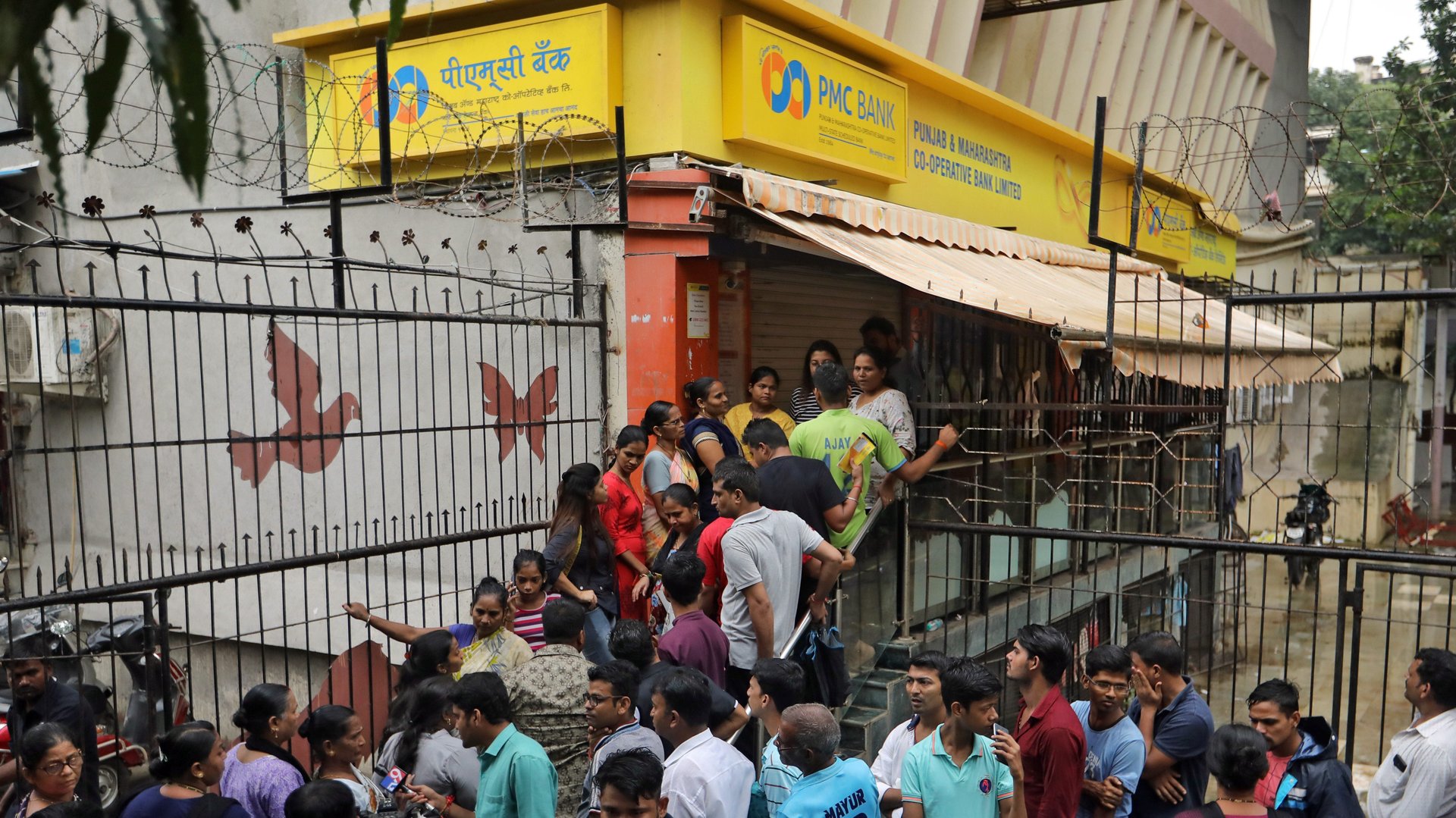What India’s PMC Bank scam can teach you about managing your money
Andrew Lobo, a resident of Mumbai, died of a cardiac arrest because he couldn’t pay for the oxygen machines he needed to breathe. The limit placed on withdrawals led to a situation where he couldn’t break his fixed deposits to pay for the machines.


Andrew Lobo, a resident of Mumbai, died of a cardiac arrest because he couldn’t pay for the oxygen machines he needed to breathe. The limit placed on withdrawals led to a situation where he couldn’t break his fixed deposits to pay for the machines.
Chirag Sanghani, another Mumbai resident, who happens to be a businessman, had all his savings in Punjab Maharashtra cooperative (PMC) bank. After the limits were placed on deposit withdrawal, his business came to a standstill and he had to survive on loans from friends and relatives. In fact, around the time the scam broke out, several WhatsApp videos of PMC depositors who were negatively impacted by the limit placed on deposit withdrawal, started going around. The good money of these depositors had turned into bad money.
There were many such individuals who were badly affected due to the limit placed on deposit withdrawals from PMC. In fact, the experience of PMC depositors offers us a few basic lessons in personal finance all over again.
These lessons are valid for every person who has a deposit in any bank. Let’s look at them pointwise.
1) The oldest cliché in personal finance is diversification, or as financial planners like to put it: Don’t put all your eggs in one basket. This applies within and across asset classes. Hence, it is important to divide the money you want to save in the form of deposits among accounts of different banks. In case one bank falls in trouble, you would still have access to the money in other banks. This is as basic as it gets.
2) The moment people put their money in a bank, they assume it is safe, forgetting that, at the end of the day, banking is just another business. And businesses fail all the time. A bank borrows money at a certain rate of interest and lends it at a higher rate. If the money the bank lends is not repaid, then it may not be able to repay a part of the deposits.
However, it is rare for a bank to default on its deposits. That is simply because when a bank reaches that stage, the RBI typically merges it with another bank. In the past, the New Bank of India was merged with the Punjab National Bank while the Global Trust Bank was merged with the Oriental Bank of Commerce. The assumption that the central bank is going to intervene in such situations creates an illusion of safety around banks.
In case of public sector banks (PSBs) the government keeps pouring money into them to ensure they are able to repay the deposits that mature regularly. Between 2017–18 and 2019–20, the government will have invested Rs2.66 lakh crore ($35 billion) in these banks to keep them going. This money saves PSBs from defaulting on their deposits even though as businesses they have been in a mess over the past few years.
Yet, most people are unaware of these aspects of banking. They deposit their money in a PSB without bothering about the safety aspects since they assume the government will come to their rescue in case things go south.
3) Several PSBs have a bad loans rate of over 10%. This means that of every Rs100 loaned by them, more than Rs10 has not been repaid for ninety days or more. Some even have a bad loans rate of 20% and above. But people continue to willingly bank with them.
So, what is it these banks offer that keeps people hooked to such banks? Maybe an extra 0.5% interest compared to another bank? Maybe the clerks are polite? Maybe they have a locker facility? Maybe the branch manager is a nice chap? But is all of it really worth the risk? When a better PSB is available to deposit money, why go for a less healthy option? Laziness is the only plausible answer here.
This is not to say the government will not rescue these banks if they falter. It will. But what if the RBI, while sorting out the mess, restricts access to deposits for a certain period as it has done in the case of the PMC Bank. While the safety of deposits is paramount, access to deposits is equally important. At the end of the day, what good is any money if it cannot be spent when required.
4) The attitude that just because money is in a bank it is safe really needs to be dispensed with. There is always a certain amount of risk attached to money that is invested. A prudent way of dealing with this is to stay away from banks which have a high rate of bad loans. Anything over 10% is a no-no.
5) There is a lack of transparency around what most cooperative banks do with the money they take from depositors. Many of these banks are run by politicians and their cronies. This is not to say all cooperative banks are bad. But it is certainly difficult to figure out which are the good ones. Also, given their huge number and political connections, the ability of the RBI to regulate cooperative banks is rather limited. In such a situation, it makes sense to stay away from these banks, even if they offer higher interest rates on deposits than commercial banks.
Excerpted from Vivek Kaul’s Bad Money with permission from HarperCollins India. We welcome your comments at [email protected].